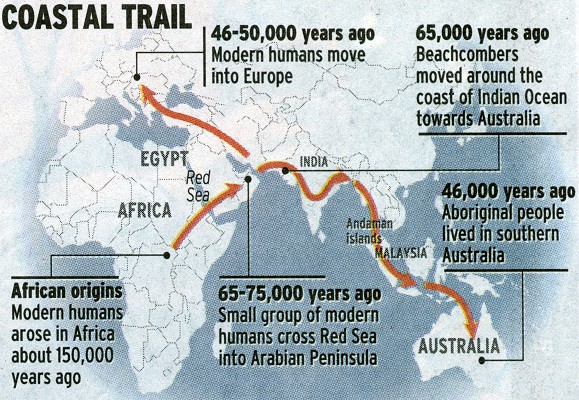 |
surfresearch.com.au
debra smith :
coastal migration, smh, 2005
|
Debra Smith : Earth's first beachcombers ended up in Australia.
Debra Smith (Science Editor) :
Earth's first beachcombers ended up in Australia
Sydney Morning Herald: Weekend Edition, May 14-15 2005 , News, page 13.
Reporting recently published research developments by
Forster and Matsumura: Evolution: Enhanced: Did Early Humans Go North or South?
Science Magazine, 13 May 2005, Number 308 Pages : 965-966
